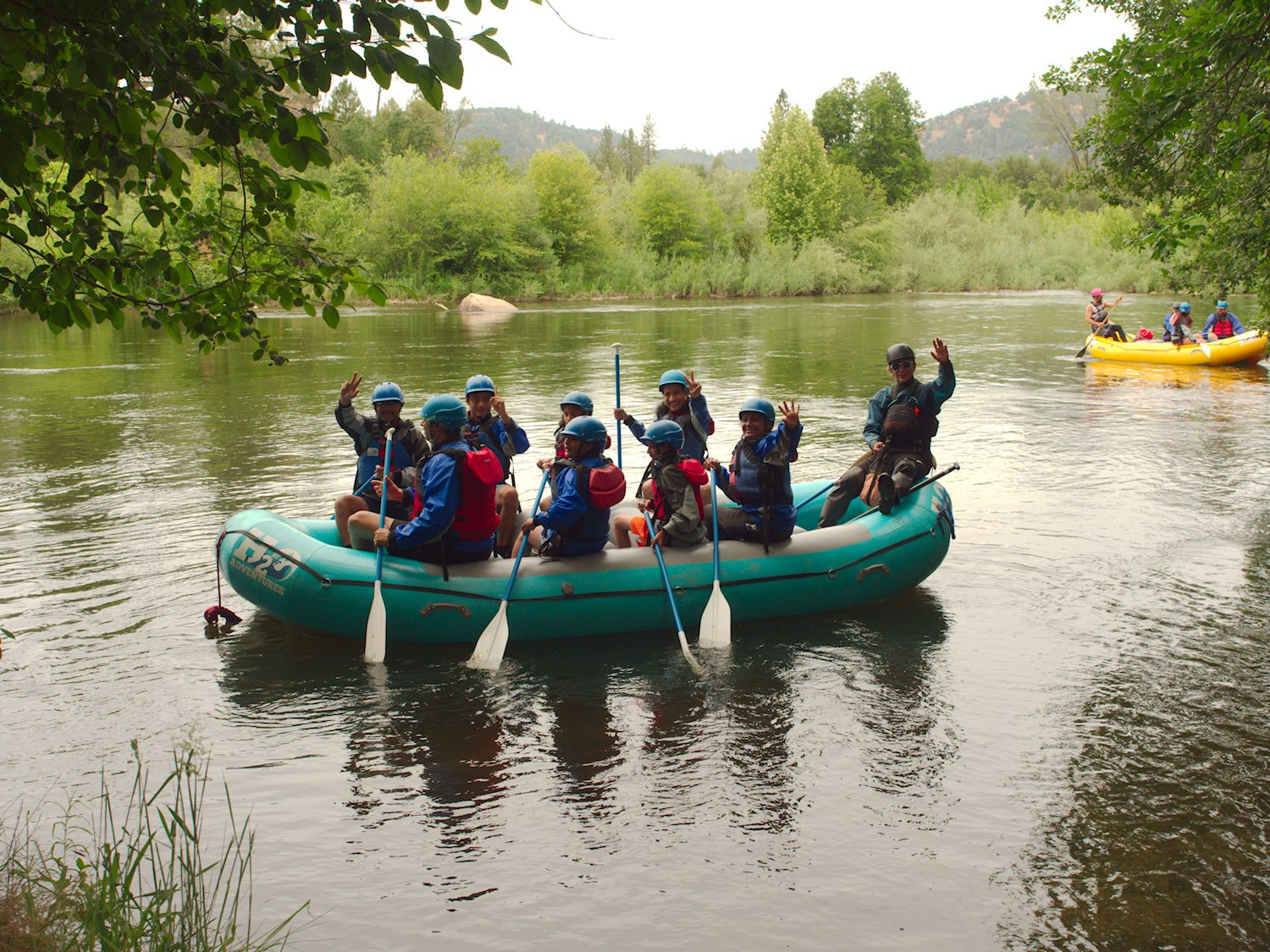Are current river helmet standards enough?
We can probably all agree that a head injury is a quick way to ruin a rafting trip. Nobody wants to end their trip in the back of an ambulance so, in November of 2022 we covered the Virginia Tech helmet study to get the spotlight on helmet safety. Since that study, there was a lot of discussion in rafting circles about the implications of that study and several questions have come up about helmet use in the whitewater world.
What does the data say about injury rates and does the data paint a picture of potential injury requiring head protection?
Unfortunately, data is pretty sparse for rafting, but we have 2 major studies available, which albeit are somewhat dated, that provide some info for us: A University of Nevada Reno Study revealed an injury rate is .26 to 2.1 injuries for every 100,000 user days or 0.00026% to 0.002%. Another way to look at is that you are 48.2 times more likely to suffer a major injury from a toilet versus the worst odds of a major rafting injury (96.4/100,000 or .0964%). Those are pretty good odds, but the UNR study focused on reportable injuries. an earlier 1995-1997 study focused on non-reported (or what we can assume are minor injuries). That study showed a 1 in 263 chance of injury from rafting or .0038%.
Construction industry data when adjusted as we would for user days shows an injury rate of .00146% per worker day. This makes rafting injury rates are 2.6 times the rates of the construction industry, however the rafting industry does not require PPE whereas the construction industry does. The Rafting industry also receives head injuries at a higher rate than construction.
While construction injuries are much more likely to produce fatal results, we should be equally concerned with how someone who survives a head injury is going to deal with the injury after the fact. From a solution-oriented approach, we can remove the mechanism for injury, but let’s be honest, we’re not gonna stop rafting. So, we need to look to mitigation and that involves helmet use.
What helmets standards are rafting and kayaking helmets adhering to?
The next question we have is a major question of standards and what standards are out there? The de facto standard is the CE EN 1385 Water Helmet Standard. This standard is a European standard that has gained popularity with helmet manufacturers across the world. Helmets conforming to this standard are only rated for class 1-4 whitewater and the standard does not recognize protection in class 5 or higher whitewater. The EN 1385 rating has the following notable standards for protection:
Helmets will absorb 15 joules of energy before failing
The retention system will not stretch beyond 25 mm
The head should not move more than 8 cm while the helmet is worn
The helmet will remain buoyant for a minimum of 4 hours of submersion
Helmets are also checked for high and low temperature failure and artificial ageing
This has left a serious question since the Virginia Tech study, is this standard even a good standard? Virginia tech measured the transfer of concussive energy to the head and this is something the CE EN 1385 standard does not account for. So, does slapping a standards label on a helmet make it fine or should we be looking to either improve the standard or use a different one? Thus, if you are an employer or an employee in the whitewater rafting industry in the United States there are some bigger concerns as well.
Can a case be made that employees of rafting outfitters and employees are potentially required to utilize head protection?
In the United States the Occupational Safety and Health Administration holds standards for employees and employers and part 1910.135(a)(1) states:
“The employer shall ensure that each affected employee wears a protective helmet when working in areas where there is a potential for injury to the head from falling objects.”
There is also an interpretation piece From OSHA which discusses specifically protection from flying objects. According to the 1997 study Most injuries occurred in the raft (51.3%) as a result of collisions among passengers, being struck by a paddle or other equipment. Thus, this could be used as justification to set a precedent for a requirement to protect employees and occupants from this kind of injury. If this is the case and OSHA does make a ruling all guides in the US would be required to wear helmets conforming to the ANSI Z89.1 standard. The ANSI standard is a much higher standard in some ways compared to the CE EN 1385 standard, however this would force a massive shift in helmet construction and design. The ANSI Standard requires that all helmets meet the following criteria:
Helmets must not transmit a force to the head form that exceeds 4,450 Joules per meter.
Helmets must be tested for impact at freezing and 120 degrees Fahrenheit
Helmets must be tested from the front, side and rear as well
Chin straps must remain attached to the helmet. Residual elongation should not exceed 1” (25mm).
There is no buoyancy requirement to meet this standard
Though the ANSI standard has a higher rating for impact protection OSHA has not ruled specifically on whitewater rafting, however the interpretation pieces suggest that there is certainly a requirement for helmets in the workplace…or in our case the raft. Oar boats in particular create a massive liability and there are several major injuries to commercial guides over the years resulting from the use of oars. There is one thing that it does not account for and that is culture. There is often a large cultural resistance to helmet use, however if you are an outfitter or trip leader it is important that you are focusing on getting guides to wear helmets. Additionally, if OSHA does make a specific ruling on helmets for guides, then employers would be on the hook for providing that PPE to their employees. Simply because they haven’t made a specific ruling employers could still be liable after the fact if an injury occurred.
Should outfitters provide helmets to their guests?
In our article on a boater’s legal duty, we looked at the principal that because outfitters have accepted money for their services there is a higher legal duty that they are held to and a claim of negligence might be easier to come by. If outfitters employees are required to wear helmets in the workplace and they do not provide that same level of protection to their guests there could be a strong case for negligence. According to Cornell Law School the general elements of negligence are:
The existence of a legal duty that the defendant owed to the plaintiff – in the case of a commercial rafting guest there is a well-established legal duty.
Defendant's breach of that duty – some elements of a breach include the creation of risk, voluntary to protection of the plaintiff, or business customer relationships.
Plaintiff's sufferance of an injury – The guest would have to sustain an injury.
Proof that defendant's breach caused the injury – a head injury (being the most likely injury in the boat) would likely meet this criteria.
If the burden of taking precautions is less the probability of a loss times the gravity of that loss, then there is a liability of negligence. Put another way if the cost of a helmet is less than the cost of a hospital visits then there is liability of negligence. With the cost of a stitch in the US running around $400, a $100 helmet seems to pale in comparison as the burden is far less than the cost of a potential loss.
This doesn’t just apply to commercial operations though; a savvy lawyer might be able to show that private boaters could have a claim of negligence to their guide. Currently, helmets are more of a cultural issue in rafting than they are a legal one, but we’re only one lawsuit away from this being a huge problem. So, the big question is why not wear a helmet? Minor discomfort is not a great excuse to offset a problematic and possibly lifelong injury. The reality of cultural change is that it is slow, but we wear helmets for the same reason we wear PFDs. We don’t always need them, but it’s better than the consequences of not wearing them.
If you have questions about helmets, you can always check out our helmet buyer’s guide below:









